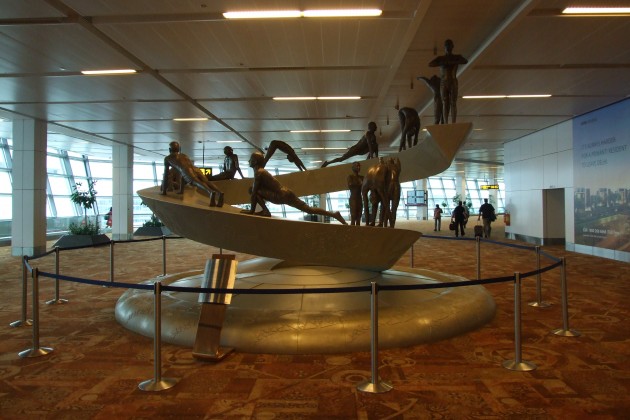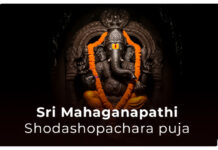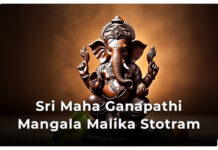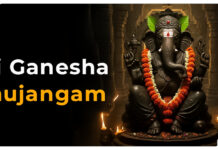Surya Namaskar
Sun is considered as “Pratyaksha Daivam” or “Visible God” in bharathiya culture. the Surya Namaskara is great way to energize our body, soul and mind. Surya Namaskara is not only way to worship the Sun god but also a great yoga sadhan, it consists of 12 yoga poses which has to be done in a sequence. Surya Namaskar has to be done in early sunrise and sunset facing the Surya Bhagwan.
Surya Bhagwan has a great importance in Sanatan Dharma, even Sri Krishna had said in Bhagawath Geetha ” I am the Sun”. that is why Sun is also called as “Surya Narayana”. He is important for Life of each and every creature living on earth. he gives energy and life. Hindus worship Surya Bhagwan for better Health. The 12 Asanas in Surya Namaskara has a mantra in each which should be recited in mind.
Every yogasan and exercise has specific speed, few should be done slowly and few fast but Surya Namaskara can be performed in any way and both have different results. When Surya Namaskara is done in slow way the effect will be more on mind, it will be equal to doing Meditation. When Performed in with speed our body willlget energy and helps in burning calories which has great effect on Physical body. do it speed or slow the 12 asanas has to be done correctly, so it is better to learn from a experienced yoga guru.
Surya Namaskara should not be practiced by those suffering from high blood pressure, coronary diseases and strokes. Also those with hernia should avoid this. Women should generally not practice it during pregnancy. People with spondylitis and sciatica should consult a doctor before practising Surya Namaskara.
How to do Surya Namaskara (The Sun Salutation)?
Surya Namaskara is series of 12 postures done in sequence. The first 7 postures are unique. The posture 8 is a repetition of posture 5. Posture 9 is a repetition of posture 4. Similarly, posture 10 is same as posture3; posture 11 is same as posture 2 and posture 12 is same as posture 1.

The 12 postures and their corresponding mantras is given below:
- Pranamasana or the Prayer pose: Stand erect with folded hands close to the chest. Relax and breathe normally. The mantra to be chanted is “Om Mitraya Namaha”.
- Hasta Uttanasana or the Raised Arms pose: Raise both the hands above the head. Inhale while raising your hands. Bend the trunk and neck slightly backwards. The mantra to be chanted is “Om Ravaye Namaha”.
- Padahastasana or the Hand to Foot pose: Bend forward till your hands touch the floor. Breathe out while bending forward. If it doesn’t touch, go as far as possible without straining. Try to touch the knees with the forehead. The mantra to be chanted is “Om Suryaya Namaha”.
- Ashwa Sanchalanasana or the Equestrian pose: Stretch the left leg as far back as possible while inhaling in. At the same time, bend the right knee. The hands should be kept straight with fingers touching the floor. Arch the back a little with head tilted back. Look straight ahead. The mantra to be chanted is “Om Bhanave Namaha”.
- Parvatasana or the Mountain pose: While exhaling, take the right leg backward and place it along the left leg. Raise the buttocks. Let the hands be straight supporting the weight of the body. The head should be placed between the hands. The pose looks like a mountain from the side. The mantra to be chanted is “Om Khagaya Namaha”.
- Ashtanga Namaskara or the Eight-Limbed Salutation: Lower the body to the ground in such a way that it touches the floor in eight locations – The two feet, the two knees, the two hands, the chest and the head. The mantra to be chanted is “Om Pushne Namaha”.
- Bhujangasana or the Cobra pose: Raise the body by using the hands. Arch the head backwards. This position looks like the cobra which has raised its hood. The mantra to be chanted is “Om Hiranya Garbhaya Namaha”.
- Parvatasana or the Mountain pose: This is same as pose 5. The mantra to be chanted is “Om Marichaye Namaha”.
- Ashwa Sanchalanasana or the Equestrian pose: This is same as pose 4.The mantra to be chanted is “Om Adityaya Namaha”.
- Padahastasana or the Hand to Foot pose: This is same as pose 3. The mantra to be chanted is “Om Savitre Namaha”.
- Hasta Uttanasana or the Raised Arm pose: This is same as pose 2. The mantra to be chanted is “Om Arkaya Namaha”.
- Pranamasana or the Prayer pose: This is same as pose 1. The mantra to be chanted is “Om Bhaskaraya Namaha”.
This is only half the round. The other round of 12 poses is done with the following changes:
In position 4 (Ashwa Sanchalasana), stretch the right leg back, instead of the left one.
In position 9 (Ashwa Sanchalasana), bend the right leg and bring the right foot forward.
This completes one round (12 + 12) of Surya Namaskara. Start with one round when you are learning the practice and then increase it up to 10 rounds.
Benefits of Surya Namaskara:
Surya Namaskara comprehensively includes asana, pranayama, mantra and meditative awareness. Hence it is good to start the morning yoga practice with Surya Namaskara.
The sequence of asanas induces deep and rhythmic breathing.
It loosens up the joints in the body.
It tones the muscles and the internal organs.
Surya Namaskara activates the Pingala nadi or the Surya nadi which enhances the energy level in the body.
It removes lethargy and makes the mind alert.
It helps to strengthen the back muscles.
It balances the respiratory, circulatory, reproductive and the endocrine system.
Surya Namaskara, when done briskly, is good practice to burn extra fat in the body.










